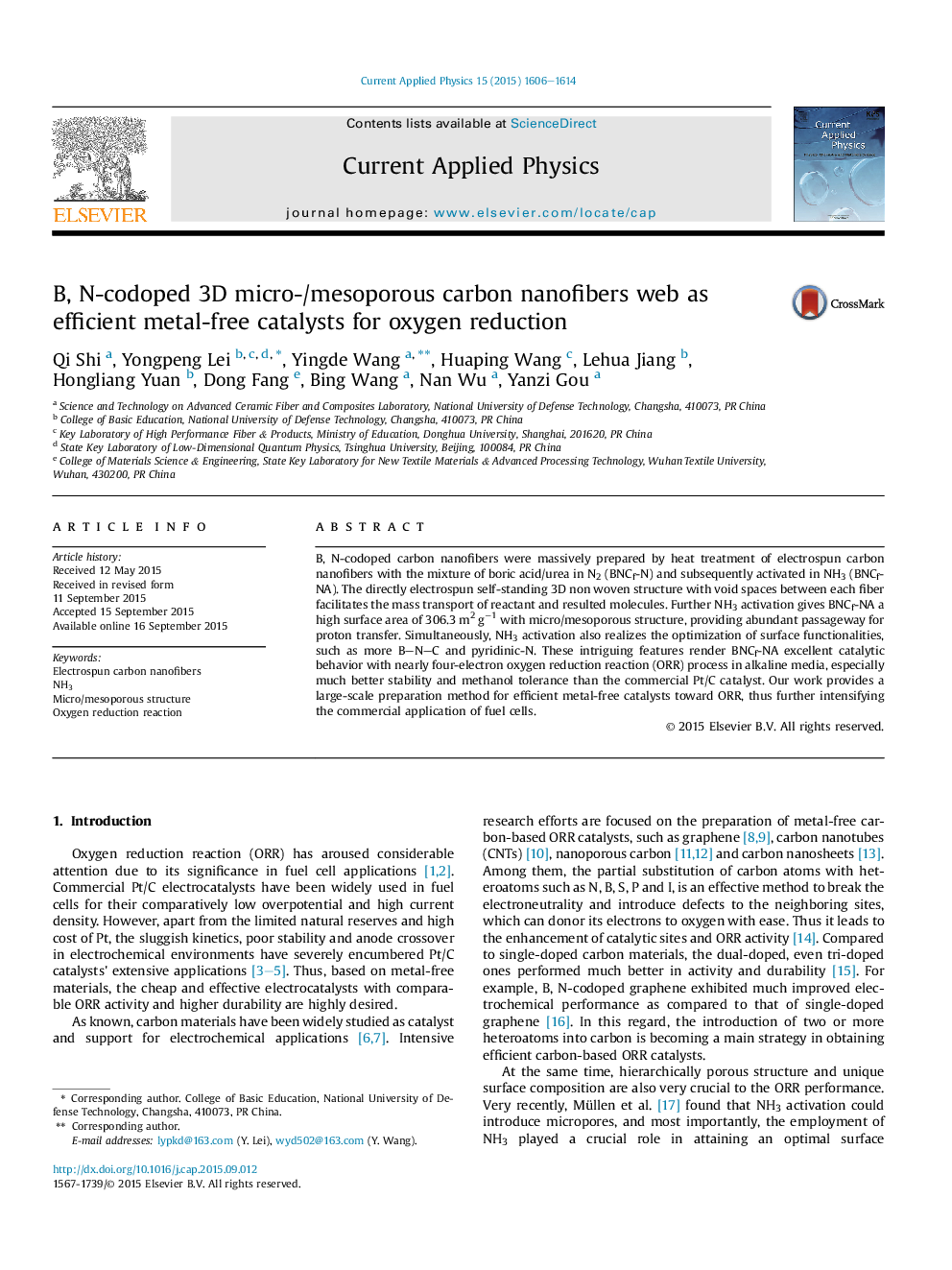| Article ID | Journal | Published Year | Pages | File Type |
|---|---|---|---|---|
| 1785524 | Current Applied Physics | 2015 | 9 Pages |
•B, N-codoped 3D micro-mesoporous carbon nanofibers web was prepared.•The electrospun fibers with void spaces facilitates the mass transport.•The NH3 activation brings hierarchical structure, large SBET and more active sites.•The B, N-codoped nanofibers web shows good ORR performance.•The web can be also used in other energy and environment related fields.
B, N-codoped carbon nanofibers were massively prepared by heat treatment of electrospun carbon nanofibers with the mixture of boric acid/urea in N2 (BNCf-N) and subsequently activated in NH3 (BNCf-NA). The directly electrospun self-standing 3D non woven structure with void spaces between each fiber facilitates the mass transport of reactant and resulted molecules. Further NH3 activation gives BNCf-NA a high surface area of 306.3 m2 g−1 with micro/mesoporous structure, providing abundant passageway for proton transfer. Simultaneously, NH3 activation also realizes the optimization of surface functionalities, such as more B–N–C and pyridinic-N. These intriguing features render BNCf-NA excellent catalytic behavior with nearly four-electron oxygen reduction reaction (ORR) process in alkaline media, especially much better stability and methanol tolerance than the commercial Pt/C catalyst. Our work provides a large-scale preparation method for efficient metal-free catalysts toward ORR, thus further intensifying the commercial application of fuel cells.
Graphical abstractFigure optionsDownload full-size imageDownload as PowerPoint slide
